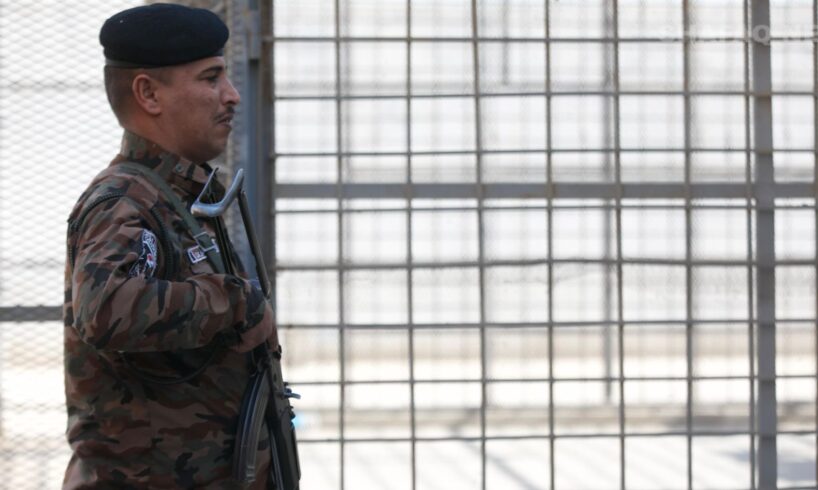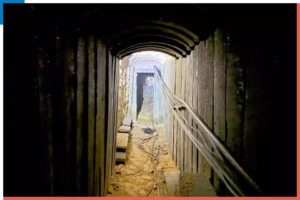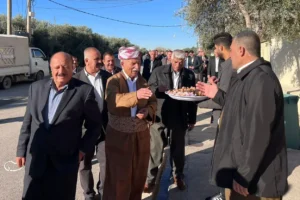
Shafaq News
Salah Abdul Hassan, now 15, left Iraq’s
juvenile correctional facility after serving a sentence for theft. When he
first entered, he could not read or write. “I did not know that stealing was a
crime punishable by law,” he recalled to Shafaq News. “But in prison, I learned
to read and write, and I was taught that freedom has no price.”
During his time in detention, Abdul Hassan
attended literacy classes, learned vocational skills, and received lessons on
proper behavior. These experiences, he explained, restored his self-confidence.
After his release more than three years ago, he began working in Baghdad’s
Shorja market to support himself and his divorced mother.
Yet, the memory of incarceration still weighs
heavily on him. “I can’t forget the bitterness of detention, despite what I
learned there,” he admitted.
Abdul Hassan’s experience reflects a wider
reality shaped by the country’s juvenile justice framework. Iraqi law defines a
juvenile offender as anyone between 9 and 18 years old who breaks the law. The
category includes boys and girls, and is divided into three sub-groups:
children, youths, and young adults.
When Childhood Turns to Crime
Juvenile delinquency, experts note, has
become a pressing social challenge in Iraq, driven by school dropouts, poverty,
family disintegration, and harsh living conditions, with misbehavior often
spiking during school holidays when oversight is weakest. Official statistics
show that 2019 recorded the highest rate of juvenile offenses in recent years,
accounting for 11.91% of all crimes.
Reform Behind Prison Walls
According to Ministry of Justice media
officer Murad al-Saidi, around 900 juveniles are currently held in reform
facilities. He stressed to Shafaq News that staff face “no difficulties” in
handling the detainees, emphasizing that the ministry follows “solid
mechanisms” in dealing with this humanitarian file.
Al-Saidi revealed that the ministry is
building a new rehabilitation complex in Abu Ghraib, Baghdad, which will
include a large sports field and other essential facilities, adding that his
department coordinates with the Education Ministry to provide literacy
programs, accelerated learning courses, and primary schools inside detention
centers. Workshops train inmates in trades and crafts to prepare them for
lawful work after release.
The ministry, he added, also implements
“aftercare” programs that include follow-up with released juveniles, support in
launching small projects, and coordination with the Ministry of Labor and
Social Affairs to secure monthly stipends. In cooperation with the Health
Ministry, medicine and medical supplies are provided. According to al-Saidi,
these measures have reduced reoffending rates among former detainees.
Scars That Outlast the Sentence
But despite these official efforts, many
inmates show little interest in reform. Abdul Hassan recalled that “fighting
and deviant behavior were widespread inside the correctional institution,” with
only a few juveniles benefiting from training or educational programs.
Social researcher Manahil al-Saleh told our
agency that prisons and correctional centers often fail to deliver positive
results. “Incarceration leaves deep psychological effects, including loss of
freedom, depression, anxiety, and withdrawal,” she clarified, warning that
contact among inmates can spread “deviant behavioral patterns,” expanding
networks of delinquency rather than dismantling them.
Al-Saleh argued that scientifically grounded
psychological and social support programs are essential to rebuild
self-confidence and reintegrate youths into society.
NGOs Filling the Void
Civil society organizations have stepped in
to bridge the gap. Researcher Kifayah Hamid, who worked with a local NGO on
juvenile justice, highlighted projects that provided multidimensional services.
In an interview with Shafaq News, she noted that volunteer female lawyers
defended indigent juveniles or handled bail procedures when families could not.
Case management files were opened for each detainee, tracking health,
psychological, and legal needs throughout detention.
To ease pressure, child-friendly rooms with
recreational activities—drawing, games, and sports—were established inside some
centers. The project also campaigned for the transfer of children detained with
their mothers to government shelters in Basra and launched post-release initiatives
by funding small businesses, aiming to replace temporary financial grants with
sustainable livelihoods.
Hamid, however, acknowledged that the work
faced serious obstacles: difficulty accessing security facilities, the
persistence of drug use and trafficking inside prisons, and the relapse of some
youths into substance abuse after release.
“The absence of strict separation between
juveniles and adults in some detention centers,” she warned, “exposes them to
harassment or to adopting hardened criminal behavior.”
Between Rehabilitation and Crime
Ultimately, Iraq’s juvenile prisons remain
double-edged: they can serve as spaces for rehabilitation or as schools of
crime. The outcome depends on whether programs succeed in steering young
offenders toward self-reliance and lawful living, or whether prison life
entrenches their alienation and deviance.
For Abdul Hassan, prison was a turning point
that allowed him to reclaim his confidence and support his family. But for many
others, the correctional experience deepens the cycle of poverty, stigma, and
crime—a cycle Iraq’s justice system continues to wrestle with.
Written and edited by Shafaq News staff.





